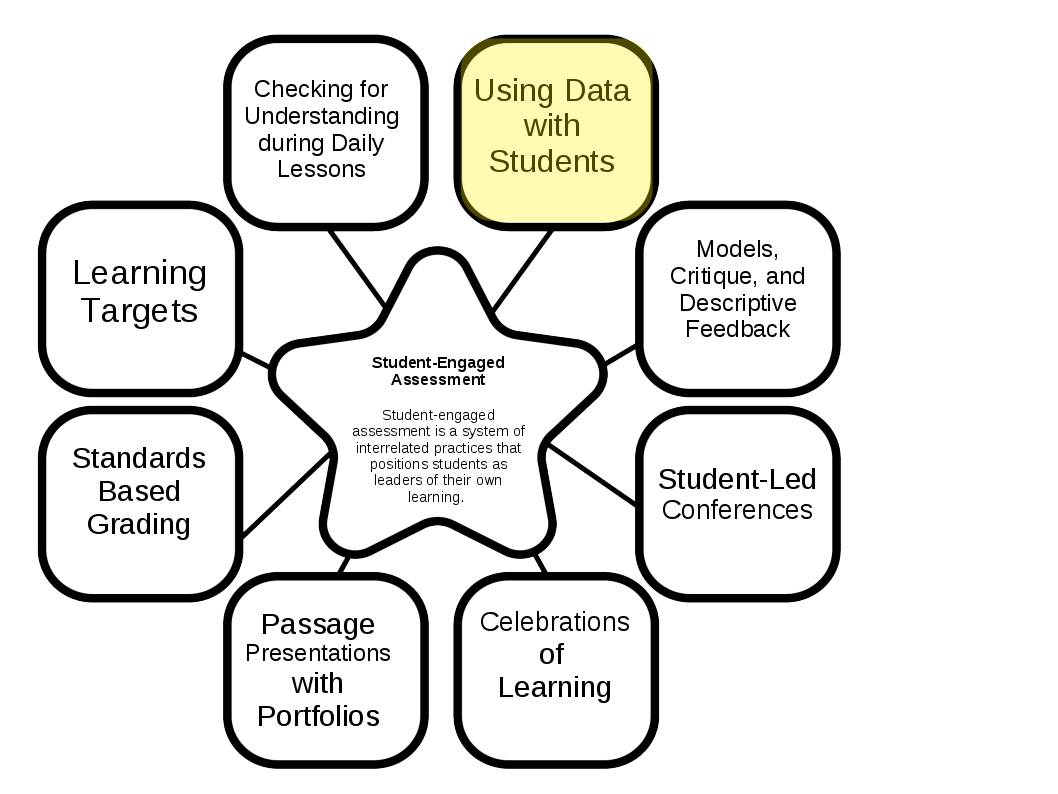Leaders of Their Own Learning

Chapter 3: Using Data with Students
- Using Data with Students
Use classwork as a source for data, analyzing strengths, weaknesses, and patterns to improve their work.
Regularly track and analyze evidence of their own progress
Set goals and reflect on their progress over time
Why this practice matters?
Empowers students to accurately assess their current level of proficiency in order to set challenging and effective goals.
Transforms student mindsets from a belief that intelligence is fixed to a belief in the power of their own potential to grow through effort.
Makes progress towards standards and makes grading transparent.
Makes students more responsible for their own learning.
Common Misconceptions about Data
Using Data is Only about basic skills and information.
Data can be used to assess critical thinking, clear communication, content knowledge, increased engagement, character, and production quality of work.
Use of data is only about test preparation
Embed data into classroom routines to improve student achievement and engagement.
Data collection is limited to quantitative data
Use rubrics, recording forms, journals, and other written data to analyze performance.
Getting Started
Creating a culture of safety for data investigation
Critical 1st step is to develop a classroom culture where it is safe to make mistakes and where a guiding belief is that effort leads to learning.
Foster a Growth Mindset in Students
Explicitly teach students about data
Use real life examples: sports page, retail sales, scientists/doctors
Use Collective Data: Everyone must scale the mountain
Start with a collective goal and collect data
Ensure Early Wins/Success
Focusing the Data Inquiry: See cycle
Assessment, Prioritize standards and collect data, organize and analyze data, identify areas of success and need, set goals, apply new skills and knowledge, assessment
Keep standards at the forefront
Begin with quantifiable data, something to count
Choose a recurrent data source
Make data matter, worthy of being counted.
Communicate with families
In Practice
Develop systems to support and deepen using data with students
Forms
Working folders and portfolios
Using digital tools
Build students’ capacity to set effective goals
Teachers serve as coaches in determining goals.
Not too easy, not too hard
- SMART goals
S=specific
M=measurable
A=attainable
R=realistic
T=timely
Summary
This chapter helped me to understand the importance of using data with students so they can learn to determine areas of need and make goals for those areas. I’ve learned I need to scaffold this process, starting with a whole group goal and data collection, then moving towards individual goal setting. I will need to determine what kind of data the students need to collect and how they will monitor that data. This is probably one of the hardest parts of the student-engaged assessments process because there are so many things to monitor! However, if I start with one thing, then move to another, it won’t be so bad. Also I think having a learning target continuum posted will help students see what the goal should be.
Check out other chapters by clicking on the links below:
No comments:
Post a Comment